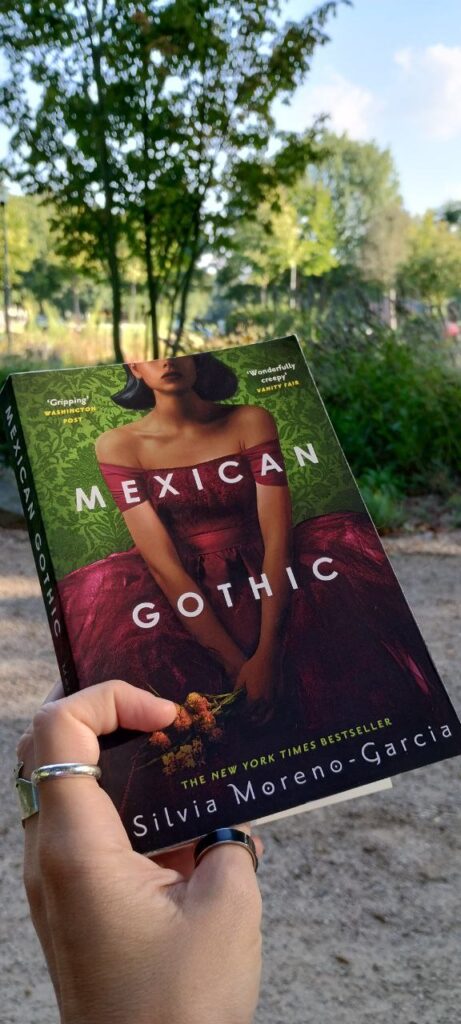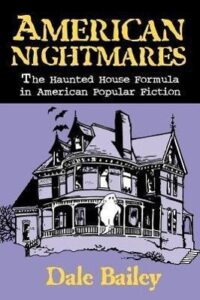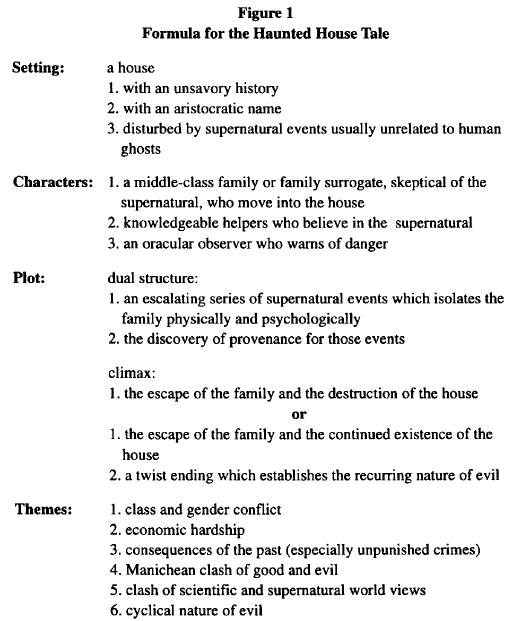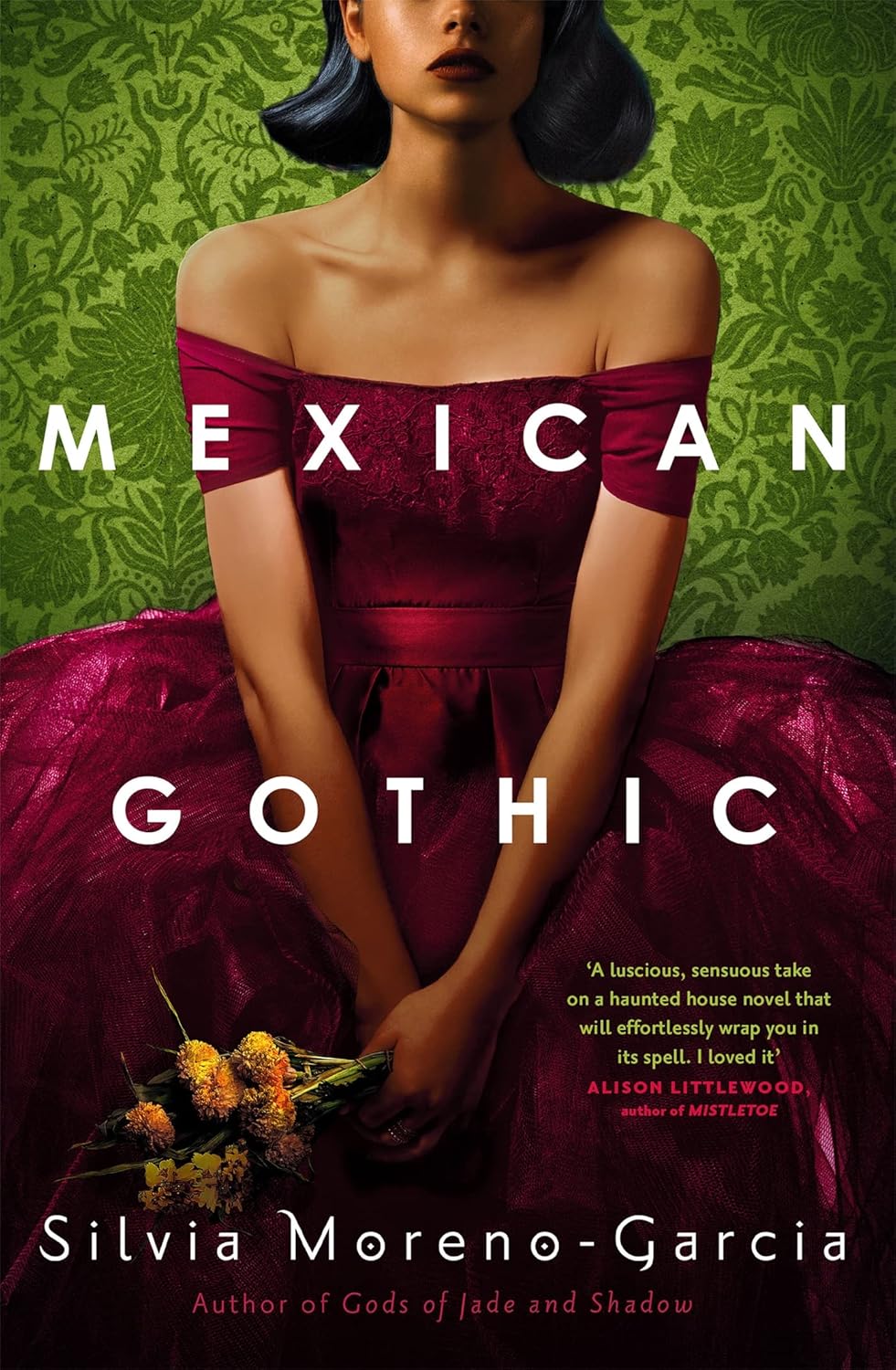A terrifying trip into Mexico’s recent history
In recent years, Silvia Moreno-Garcia has made a name for herself as an accomplished author of horror novels. Probably one of her best-known stories is Mexican Gothic. I’ve finally caught up with the book, which is now considered a modern classic of gothic fiction – and apart from some minor weaknesses, I’m thrilled.

Mexico in the 1950s: young socialite Noemí Taboada breathes the glamorous city life of Mexico City with every pore of her body. But when she receives a strange letter from her freshly married cousin Catalina, Noemí travels to the ghostly highlands of Hidalgo. High Place, the age old estate of the English Doyle family is located there. Once a family that became rich from a silver mine, the Doyles, including Catalina’s husband Virgil, have since become a small, reclusive, and above all strange clan. They avoid contact with Mexican culture as far as possible and are correspondingly dismissive of Noemí. But she is not intimidated by the Doyles’ elitist and colonial demeanor. She confronts the aged, disgusting patriarch Howard and his son Virgil with her head held high. What she doesn’t realize is that she herself is about to get caught up in the spider’s web of High Place and the Doyles.
Atmosphere Beats Plot
Mexican Gothic has been compared to Gothic novels such as Jane Eyre and The Mysteries of Udolpho repeatedly. This makes a lot of sense, as Moreno-Garcia’s novel also revolves around an old, decaying house. Here, too, the building itself symbolizes the family that owns it. Similar to these Gothic classics, Moreno-Garcia emphasizes atmosphere above all else. The plot builds up slowly, but then steadily increases until a fast-paced finale.
At first, events at High Place seem quiet and inert. Noemí spends day after day without really aiding her sick, mentally unstable cousin. For long stretches, Mexican Gothic tells of inactivity and passivity. There is simply nothing meaningful that Noemí can do in this dusty place. In the foggy highlands, her life comes to a standstill and seems to meander aimlessly.
For fans of fast-paced plots, this is probably the novel’s greatest weakness. Until the last quarter, the plot doesn’t really progress, instead circling around itself and the oddities that Noemí experiences in High Place. However, if you like this slow narrative style, you will find exactly what the title promises: a genuine Gothic novel set in Mexico.
An Unusual Setting
It is precisely this titular claim to be a Mexican variant of the original English Gothic tale that makes Moreno-Garcia’s novel so exciting. Cultural and historical themes are omnipresent in the narrative, but without seeming contrived. Mexico’s capital city during the 1950s is marked by a colorful party life – for those who can afford it. It is not uncommon for women like Noemí to smoke and flirt with men at these cocktail parties. But they are neither allowed to vote nor to attend public universities. It is a world in upheaval that is pushing forward into modernity on the one hand, but clinging to outdated values on the other.
This contradiction only becomes more apparent when Noemí travels to mountainous Hidalgo. As the name implies, High Place towers over the small town of El Triunfo. While the town already looks like it has fallen out of time, this impression is only reinforced at the Doyle estate. The building is only partially electrified and the roads to El Triunfo are impassable in bad weather. Howard Doyle is an enthusiastic supporter of eugenics, outdated but still a discussion topic at the time, and wants to impart his disgusting ideas on racial hygiene on Noemí. The bygone Mexican Revolution (1910-1920) continues to loom as well, as it was one of several key moments that led to the closing of the local silver mine could and hence the downfall of the Doyles.
All diese Details verleihen Mexican Gothic eine Stimmung, die zugleich (alb-)traumhafte und doch glaubwürdige ist. Kurzum: eine Vielschichtigkeit, die Noemís bedrückendes und zunächst unbestimmtes Gefühl des Unwohlseins in High Place greifbar vermittelt.
As brilliant as all of this is, the novel struggles a bit with its characters. Howard Doyle, who is supposed to rule High Place as a physically and mentally repulsive patriarch, is simply not present enough to really seem like a threat. Even the supporting characters, who are not directly connected to the Doyles but are nevertheless essential to the plot – the family doctor, the herbalist, etc. – also fail to develop their narrative potential.
However, I can easily forgive these minor weaknesses. Mexican Gothic is already one of my personal reading highlights of 2024. How I can know that already? Because I keep thinking about the book! Time and time again, I think of little things that add yet another layer to the story. There are countless ways to approach and analyze this story.
Following this review, I will briefly outline some of these key themes. But first the hard facts!
Fact Sheet: Mexican Gothic
Released: 2020
Author: Silvia Moreno-Garcia
Number of Pages: 301
More reviews on www.gothicendeavors.de
Spoiler warning: The plot of the novel is discussed below
Mexican Gothic as a Haunted House Tale
For me, haunted house tales are the crème de la crème of horror literature. Whether it’s Edgar Allan Poe’s The Fall of the House of Usher, Shirley Jackson’s The Haunting of Hill House, Stephen King’s The Shining or Silvia Moreno-Garcia’s Mexican Gothic: I feel at home in these old walls, some of which have already fallen into ruin. They convey a feeling of pleasant creepiness that develops into a nihilistic climax of horror.
High Place is a character in its own right, whose motivations and intentions both Noemí and we as readers try to interpret. The moment Noemí enters the house, one question comes to the fore: Are ghosts haunting High Place? Or is it perhaps the house itself that is haunting its inhabitants?

With this ambivalence, Mexican Gothic follows a narrative tradition which Dale Bailey discusses in detail in his non-fiction book American Nightmares: The Haunted House Form in American Popular Fiction. Admittedly, Bailey’s book obsessively attempts to reduce the haunted house subgenre to one common, homogeneous denominator that, on closer inspection, does not hold water. Nonetheless, Bailey identifies some commonalities that make these haunted house tales recognizable to us readers – the rules of the subgenre, so to speak.

Mexican Gothic is such an excellent novel because it plays by these rules with ease and yet knows how to surprise. The key question of whether this is a haunted house (i.e. ghosts) or a haunting house (i.e. the house itself) is answered here with a clear “Both!”. It is haunted by the ghosts of the Doyles, who in turn are only trapped in High Place because the walls have been overgrown by a fungus for centuries. Over the course of time, it has merged with the Doyles. Man, building, fungus: in High Place, all of this merges into a grotesque horror that in many places is reminiscent of the weird fiction of H. P. Lovecraft and at the same time surpasses it.
Unexpected Characters
Mexican Gothic also lends itself to a character analysis. Noemí is the self-confident protagonist who wants to shape her life according to her own ideas. She has little in common with the “damsels in distress”, the innocent and needy protagonists we see in Ann Radcliffe’s above mentioned The Mysteries of Udolpho. Noemí wants to study, she wants to vote, and she wants to continue enjoying her cocktail parties. She does not only question society’s idea of how a woman should behave, but outright breaks with thesenorms. However, Noemí does not lose her humanity in the process, but remains a likeable, three-dimensional character.
Her counterpart is her cousin Catalina, who on first glance resembles the true damsel in distress. And yet, on closer inspection, we realize that this is by no means the case: Catalina has been trying to escape the Doyles and their sinister plans since her arrival in High Place as well. She was just less fortunate than Noemí and was sedated with drugs before she could act.
Then there are the Doyles. The family likes to keep to themselves – literally, as they look back on a fairly straightforward family tree due to incest. Nevertheless, there are several surprises here too. The rebellious Ruth has tried to escape her family and resembles Noemí and Catalina in this respect. The helpless and dejected Francis, on the other hand, lives according to his tyrannical family’s ideas until he is incited to rebel by Noemí. If anyone here is a damsel in distress, it is this male, English heir.
These are merely two of many possible themes in the novel. Colonialism, eugenics, marginalization – these are all other important topics that are present in the novel and give it its complexity.

